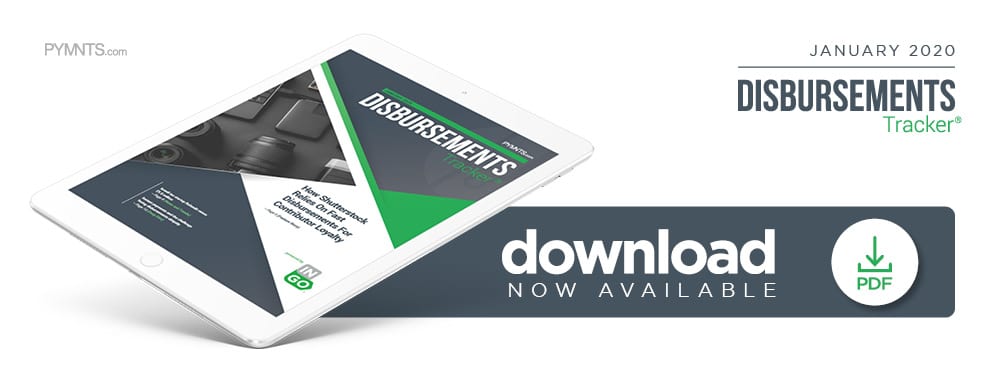How Shutterstock Relies On Fast Disbursements For Contributor Loyalty

Photographers and other creative professionals find aggregators to be extremely efficient at distributing their work, but extremely inefficient when it comes to paying them royalties when their works are used. In the latest Disbursements Tracker, Paul Brennan, vice president of content operations for Shutterstock, discusses how the company is enabling faster disbursements for its 1 million contributors to drive retention and keep buyers coming back.
 Content creators are responsible for staggering amounts of output, providing the essential images, music tracks and videos that make online consumption possible. These workers must keep up with speedy production deadline cycles but are rarely compensated as efficiently.
Content creators are responsible for staggering amounts of output, providing the essential images, music tracks and videos that make online consumption possible. These workers must keep up with speedy production deadline cycles but are rarely compensated as efficiently.
A lack of convenient disbursements could quickly frustrate creators and push them to abandon platforms for those with more robust payment systems. Firms that depend on trusted relationships with musicians, photographers and other creatives must thus approach payments flexibly to ensure loyalty.
Stock content provider Shutterstock made disbursement innovations to satisfy its more than 1 million contributors, noted Vice President of Content Operations Paul Brennan in a recent interview with PYMNTS. Its disbursements are completely online and allow creatives to opt how they would like to be paid.
“The whole [disbursements] process now is set up for self-service,” he said. “It is a very convenient user experience [when] initially setting up your account, becoming a contributor and then setting your own preferences [on] how it is that you would like to get paid.”
Shutterstock provides disbursements, notifications and contributor benefits through an online dashboard it tailored to contributor experiences. The platform’s availability and flexibility is critical to Shutterstock’s relationship with content creators around the world.
How Payment Preferences Engineer Loyalty
Content creation is symbiotic — creatives need online platforms to disseminate their work and platforms need artists to operate. Maintaining this balance can be challenging in just one market or country, but difficulties compound when operating on a global scale. Shutterstock works with contributors in more than 150 countries, meaning digital disbursement tools are a must when making sure each user has access to the right types of payments and currencies.
“I think, for each contributor, there [are] a couple of things that they consider [for disbursements, and] one is ultimately [the methods] available to them in their geographic locations,” Brennan said. “[Another] would be the convenience of getting the payment exchanged into their local currencies, and then, of course, any fees or rates that are associated with their transactions locally. So we set [payments] up in a way that [they] have a choice of which service to use and they can express their preferences based on what suits them.”
Shutterstock abandoned check payouts years ago and now works with three online payment providers to ensure that funds can be sent and received globally, issuing monthly disbursements in USD. The company sets a minimum amount of $35 per payout and allows creators to set higher minimums for flexibility and convenience. This can have a key effect on creatives’ efficiency and production rates, Brennan explained, making the move a net positive for both Shutterstock and individual content providers.
“We talk to as many of our contributors as we can,” he said. “In some cases, say on a hobbyist basis, [creators] may be using their earnings from Shutterstock to buy a new camera lens or new software they can use to produce new content. They may set their rate of payouts at something higher and then they’ll get paid out and use that [money] to invest in new equipment. That is a story we hear often.”
The company is always on the lookout for technologies or payment trends that could further enhance contributor loyalty, he added. This includes artificial intelligence (AI) or other advanced learning tools for deeper insights, increased disbursements functionality and contributor features on Shutterstock’s mobile app.
The Role Of Mobile Disbursements
Consumers frequently rely on mobile phones for their financial and professional needs, and Shutterstock provides a mobile app that allows contributors to upload and auto tag their content. Brennan noted that the app’s functionality is “continuously evolving” with users’ preferences and that it currently provides earnings insights and alerts contributors when content has been downloaded, though it does not yet support disbursements.
“We are always innovating all of our experiences, and we always have a roadmap that is reflective of [the] requirements of our network,” he said. “We prioritize those requirements based on [what will have] the most beneficial impact to contributors.”
Mobile disbursements are one of several tools that may impact contributor loyalty over the next few years. Content creators are unlikely to request slow and inconvenient payout methods, which means platforms must keep careful watch on evolving preferences to maintain their edge in the ever-changing space.